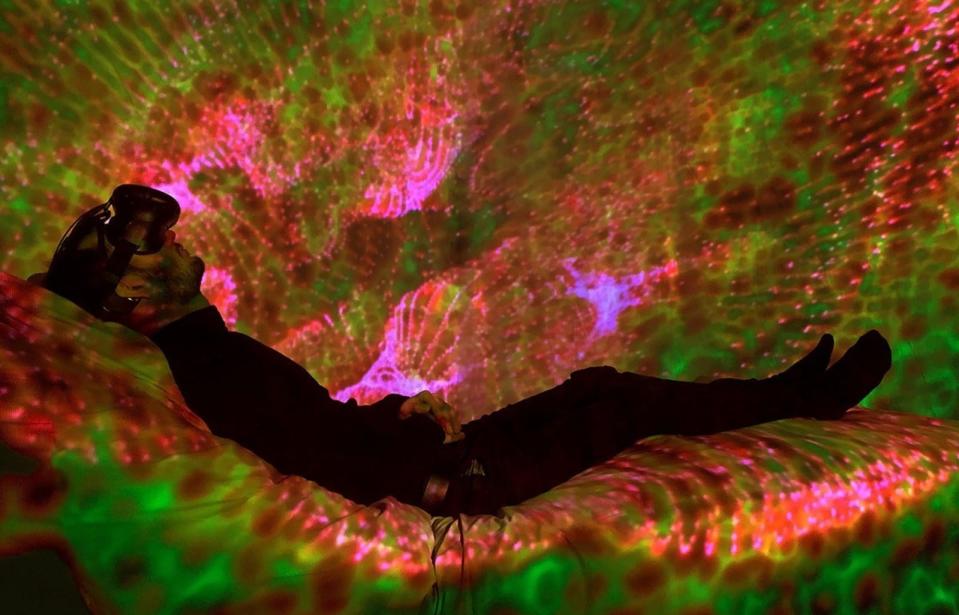Brain-controlled VR lightshows could lull you to sleep
Tech and sleep don't have to be mutually exclusive.
By most accounts, technology wreaks havoc on our sleep. Even tools meant to help us sleep better can make insomnia worse. But sleep and tech don't have to be mutually exclusive. Artists and researchers from Royal Melbourne Institute of Technology (RMIT) University have created a virtual reality tool to induce sleep. The device, Inter-Dream, combines ambient music controlled by artists with kaleidoscopic visuals controlled by the user's brainwaves, via EEG.
Inter-Dream assigns different colors and properties to different brainwaves, and since brainwaves are always changing, the visuals and colors change, too. The result is a constantly moving, mirage of colors, shapes and patterns. More active brainwaves are associated with more active displays. The idea is that people whose minds are more active just before bed have a harder time falling asleep. By providing vibrant visuals of users' brainwaves, Inter-Dream lulls people to sleep and helps them learn to calm their minds. It uses principles of neurofeedback, using real-time displays of brain activity to teach users how to regulate their mental states.
Inter-Dream was first conceived as a public art project by PluginHUMAN -- a partnership between Dr. Betty Sargeant and Justin Dwyer. But it piqued the interest of PhD researcher Nathan Semertzidis, from RMIT University's Exertion Games Lab. Semertzidis took a deep dive into the science behind Inter-Dream's ability to improve sleep. He found that participants in an RMIT University study reported a 21 percent drop in negative emotions and a 55 percent drop in feelings of fear after using Inter-Dream. Their positive emotions increased eight percent and their feelings of serenity jumped 13 percent. Theoretically, those changes would all lead to improved sleep.
Creative activities and meditation have also been shown to improve pre-sleep cognitive states and improve rest. But some will undoubtedly find it easier and more appealing to strap on a VR headset and let their brainwaves guide them, through a world of color and light, to a state of relaxation. Semertzidis says more testing is needed before a tool like Inter-Dream could be deployed, but at the very least, it's evidence that in some cases, tech can actually help us sleep.


